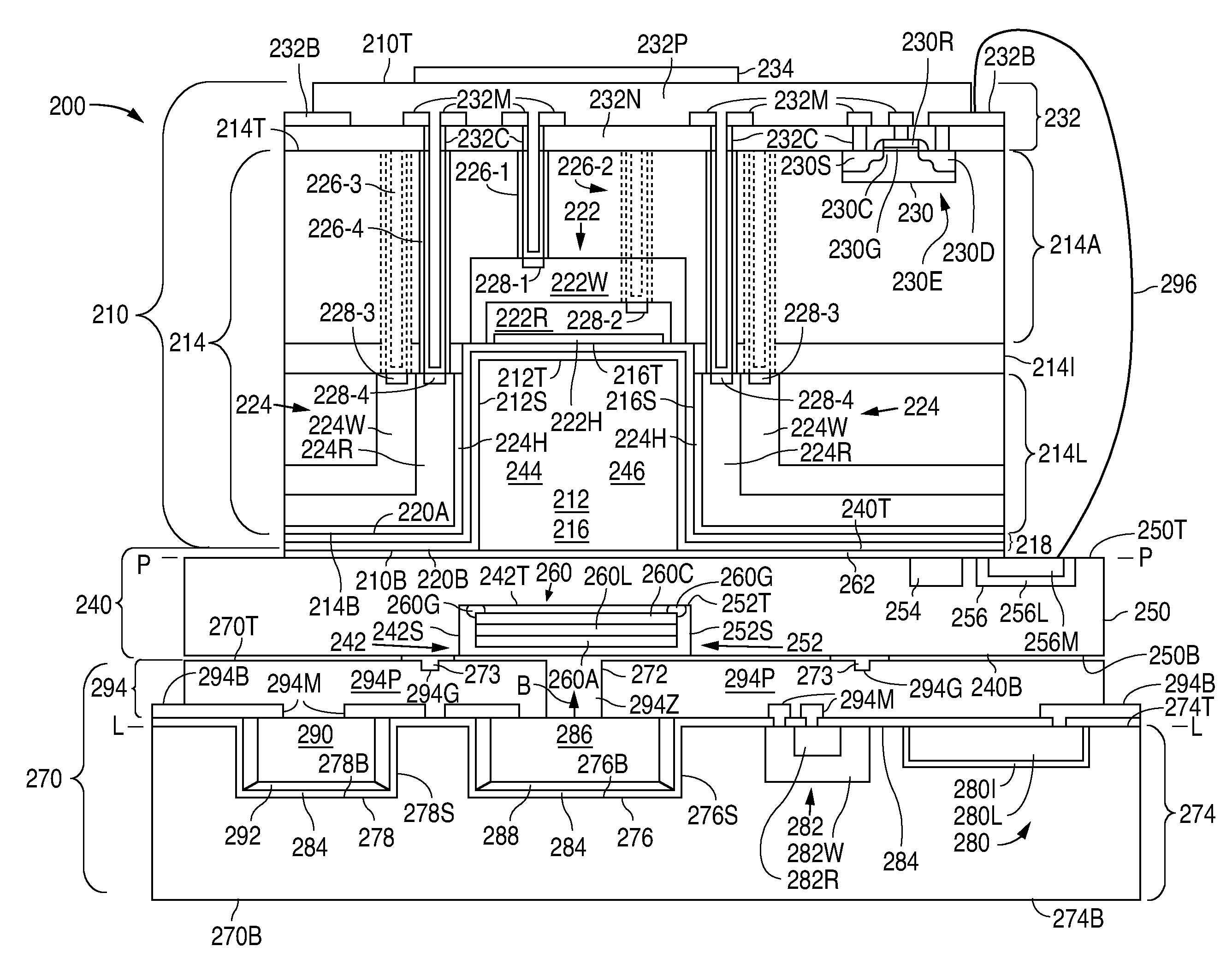Die-sized atomic magnetometer and method of forming the magnetometer
a magnetometer and atomic magnetometer technology, applied in the field of atomic magnetometers, can solve the problems of limiting the types of applications where atomic magnetometers can be commercially utilized, and the ability of electrons to no longer absorb light energy,
- Summary
- Abstract
- Description
- Claims
- Application Information
AI Technical Summary
Benefits of technology
Problems solved by technology
Method used
Image
Examples
Embodiment Construction
[0026]FIG. 2A shows a cross-sectional view that illustrates an example of a die-sized atomic magnetometer 200 in accordance with the present invention. As shown in FIG. 2A, atomic magnetometer 200 includes a first die 210 that has a top surface 210T, a bottom surface 2106, and a first die cavity 212 that extends into first die 210 from the bottom surface 210B of first die 210. First die cavity 212, in turn, has a top surface 212T and a side wall surface 212S. The top surface 212T of first die cavity 212 lies below and spaced apart from the top surface 210T of first die 210.
[0027]As further shown in FIG. 2A, first die 210 includes a first semiconductor structure 214 that has a top surface 214T, a bottom surface 214B, and a first semiconductor cavity 216 that extends into first semiconductor structure 214 from the bottom surface 214B of first semiconductor structure 214. First semiconductor cavity 216, in turn, has a top surface 216T and a side wall surface 216S. The top surface 216T ...
PUM
 Login to View More
Login to View More Abstract
Description
Claims
Application Information
 Login to View More
Login to View More - R&D
- Intellectual Property
- Life Sciences
- Materials
- Tech Scout
- Unparalleled Data Quality
- Higher Quality Content
- 60% Fewer Hallucinations
Browse by: Latest US Patents, China's latest patents, Technical Efficacy Thesaurus, Application Domain, Technology Topic, Popular Technical Reports.
© 2025 PatSnap. All rights reserved.Legal|Privacy policy|Modern Slavery Act Transparency Statement|Sitemap|About US| Contact US: help@patsnap.com



